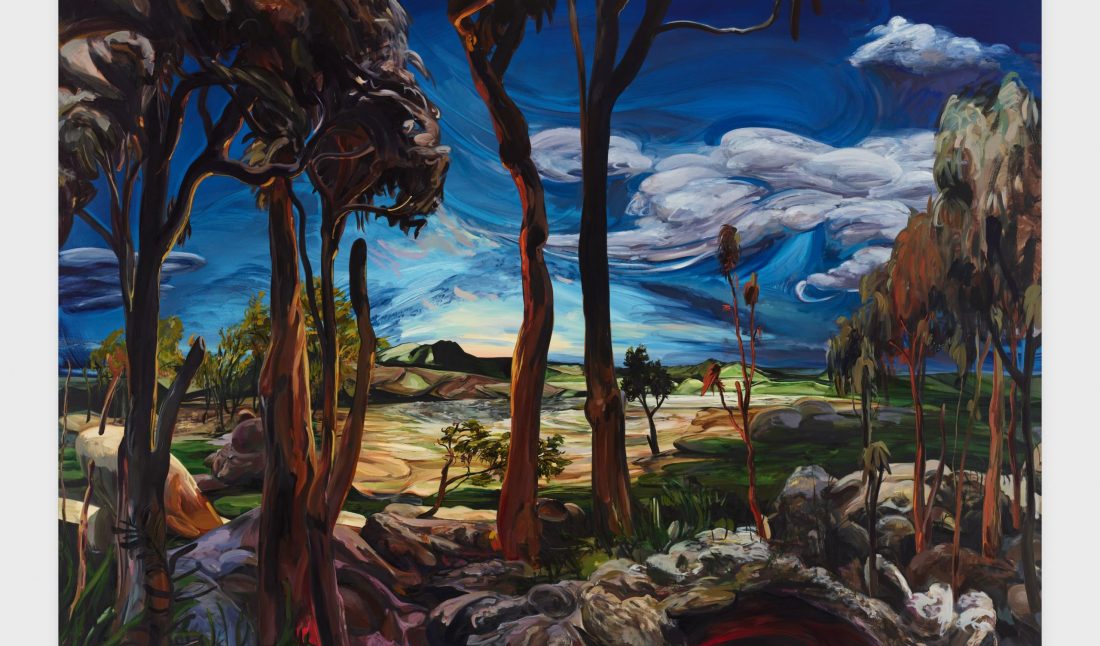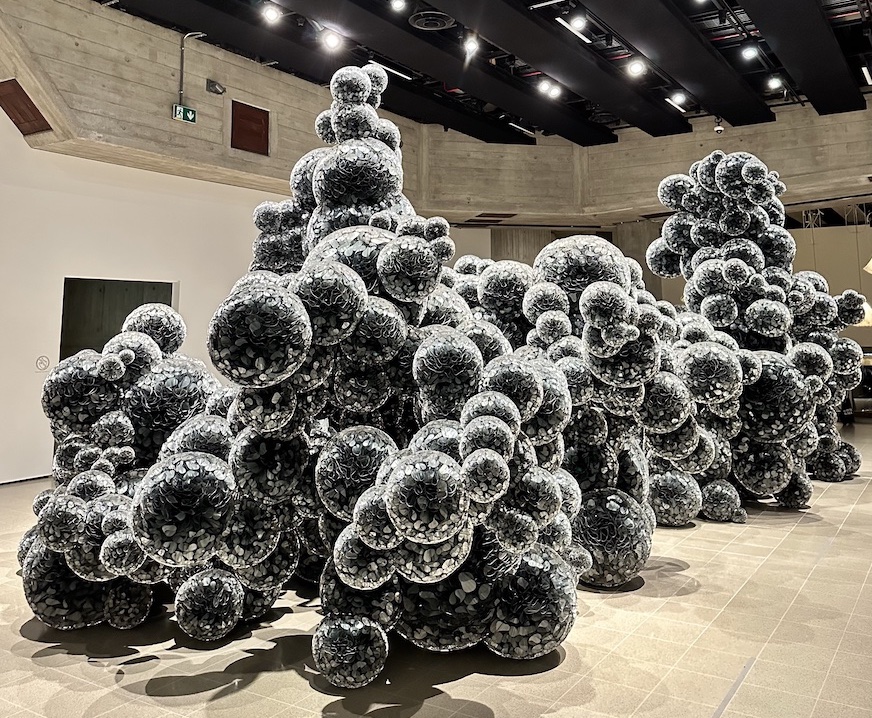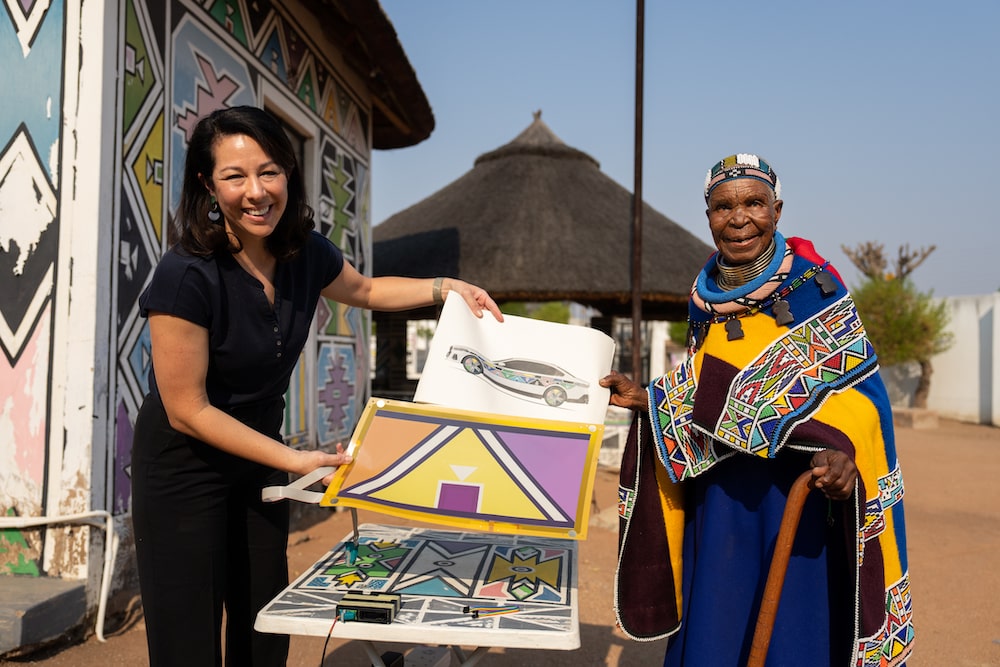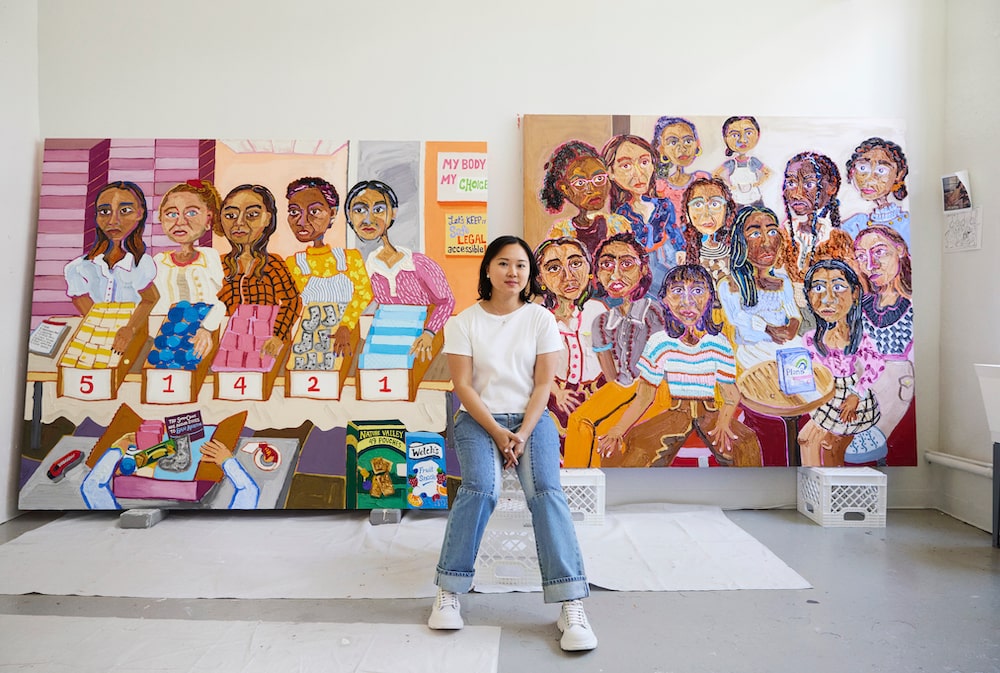Emma Webster’s latest exhibition “Ready the Lanterns” was recently on view at Stems Gallery in Brussels. Here, the artist’s ethereal landscapes livened the industrial gallery walls with imagined places that, while harnessing realistic qualities through Webster’s use of light and form, appear to be from a land no person has ever visited in their waking life—and as it turns out, they aren’t.
Webster’s creative process involves the generation of digital landscapes using VR imaging, which the artist then translates onto a canvas. Specifically, a painter of landscapes and not a landscape painter, as a description of Webster’s practice aptly states, the artist’s imagined scenography entrances viewers to a slightly hallucinogenic effect that might impose questions of real versus imagined.
Titled in a declaration of a beginning, “Ready the Lanterns” shares a look into the artist’s treatment of exhibition much like that of a theatrical production, where the viewer is the audience, and the painting is a proscenium through which we can experience the illusion within. Interested in the show and Webster’s approach, Whitewall caught up with her to discuss the works on view and her practice at large.
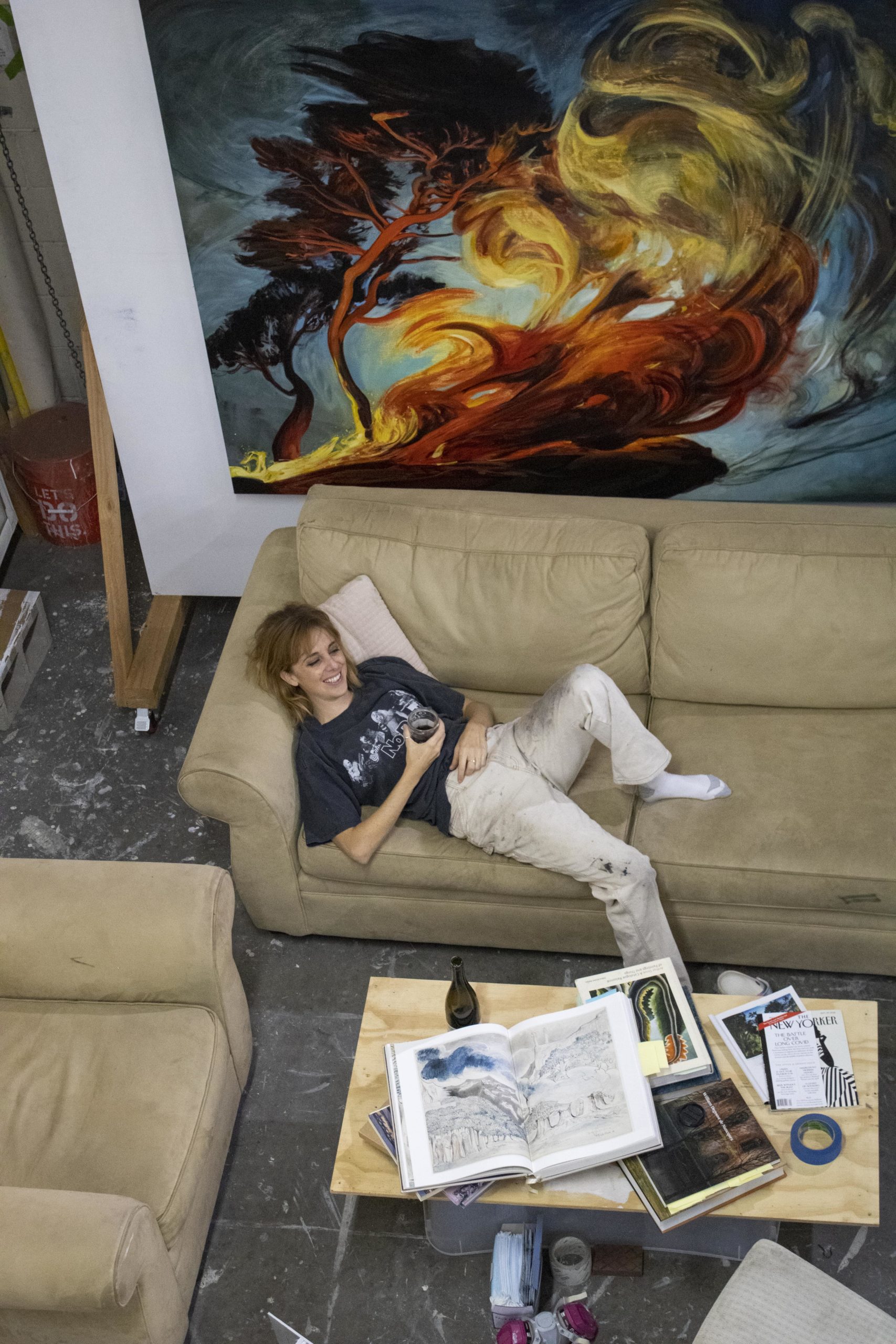 Portrait courtesy of Emma Webster.
Portrait courtesy of Emma Webster.
WHITEWALL: What was the starting point for “Ready the Lanterns!” at Stems Gallery?
EMMA WEBSTER: Lighting design. I wanted to reimagine what “nocturnes” might mean outside of “night.” By removing the natural cycle of sunlight in sketches, the paintings hold an on-call twilight. They lean into the uncomfortable drama of landscapes we might expect, but have somehow been caught outside of time.
WW: What kind of dialogue comes from the contrast of the stark, industrial gallery space and the warm, organic nature of your paintings?
EW: I love the barrenness of Stems’s big hall and its concrete texture. The neutral-value walls function like a comparative palette: they heighten the painted light. Grey makes them glow.
WW: The landscapes you paint aren’t necessarily from any place people have seen in real life—in fact, you first create them using VR. What are you hoping your viewer will gain or experience in these constructed realities?
EW: I want a kind of wholistic plausibility. The spaces of the paintings shouldn’t be realistic, but believable. My hope is that the work doesn’t deceive as much as mystify.
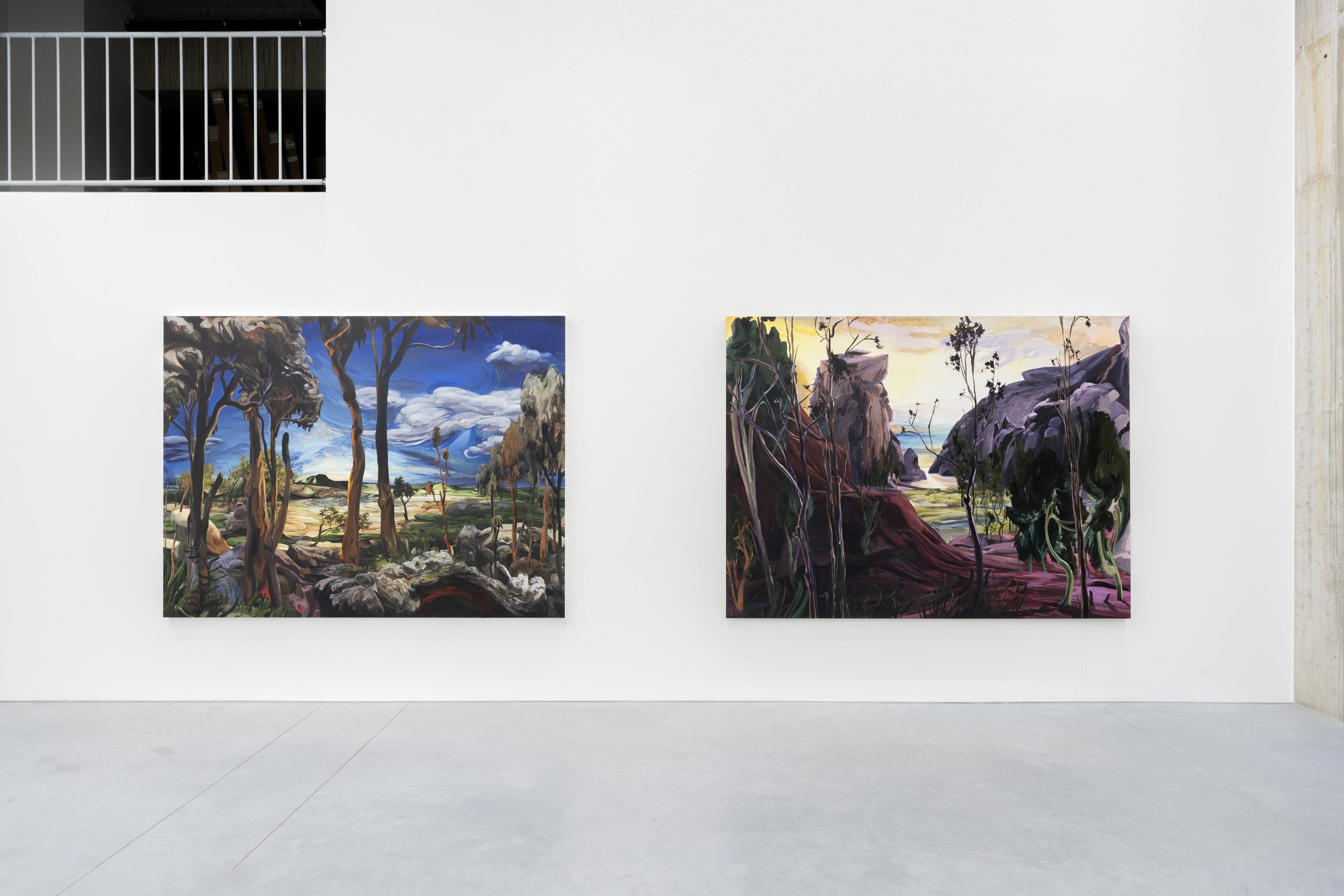 Emma Webster, installation view, “Ready the Lanterns,” at Stems Gallery, Brussels, courtesy of the artist and Stems Gallery.
Emma Webster, installation view, “Ready the Lanterns,” at Stems Gallery, Brussels, courtesy of the artist and Stems Gallery.
WW: Can you tell us about the creative process involved here, translating imagery from the virtual world onto a canvas?
EW: Isn’t that the root of all image-making? Taking this complex internal thing and translating, sharing it?
To me, the strangest part isn’t working from a study or model; it’s that here the model is also a kind of ether. Screen space is its own impermanent dreamscape. The virtual becomes like a shared intuition.
WW: You are considered a painter of landscapes, but not a landscape painter. Have you ever been a landscape painter or did your interest in imagined scenography come from another source? What kind of tone do you think this sets for your practice as a whole?
EW: Every time I paint in plein air I am amazed at how everything seems to move—the sun, shadows, clouds, colors, my body—it’s all subject to change. To paint from and in the world is to cope with it. To refashion a landscape to one’s own tastes is entirely different, it’s almost like shifting the goal posts.
Is that egomaniacal? Repressive? Definitely self-serving, which encapsulates our relationship to and exploitation of the environment. When we “set a scene” we start with the assumption of vacancy. That’s a problem.
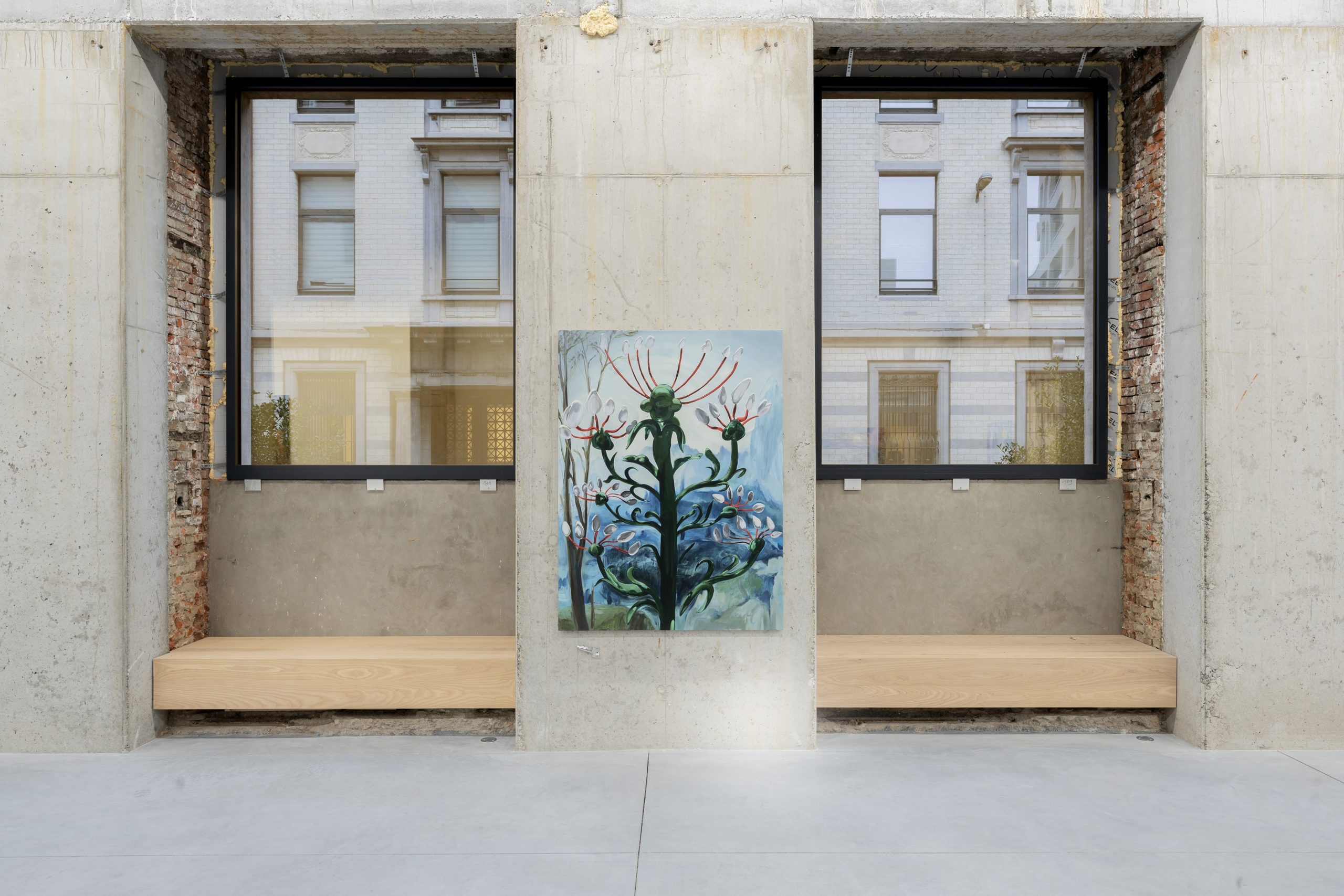 Emma Webster, installation view, “Ready the Lanterns,” at Stems Gallery, Brussels, courtesy of the artist and Stems Gallery.
Emma Webster, installation view, “Ready the Lanterns,” at Stems Gallery, Brussels, courtesy of the artist and Stems Gallery.
WW: Do you intentionally treat your work and exhibitions as the makings of theatrical productions or was this more a matter of chance? How do you see yourself and your practice in relation to the theater and the role of a director?
EW: Yes, I keep coming back to theatre as a parallel to painting because it accounts for spectatorship and interface. Painters make images, which need to be seen. Theatre begs for immersion. Like Foucault’s heterotopia [concept], we have to consider both the proxy world built in the black box AND how that plays with/against the real, outside world. When we hear “director” we think about actions, or relationship with actors and plot, but the role is also about setting conditions. A director of space, an architect.
WW: What are you working on next?
EW: I’m playing with different sculptural techniques, both analogue and digital, to inform sketches. I can’t say much more about what’s coming next, but it’s certainly exciting.
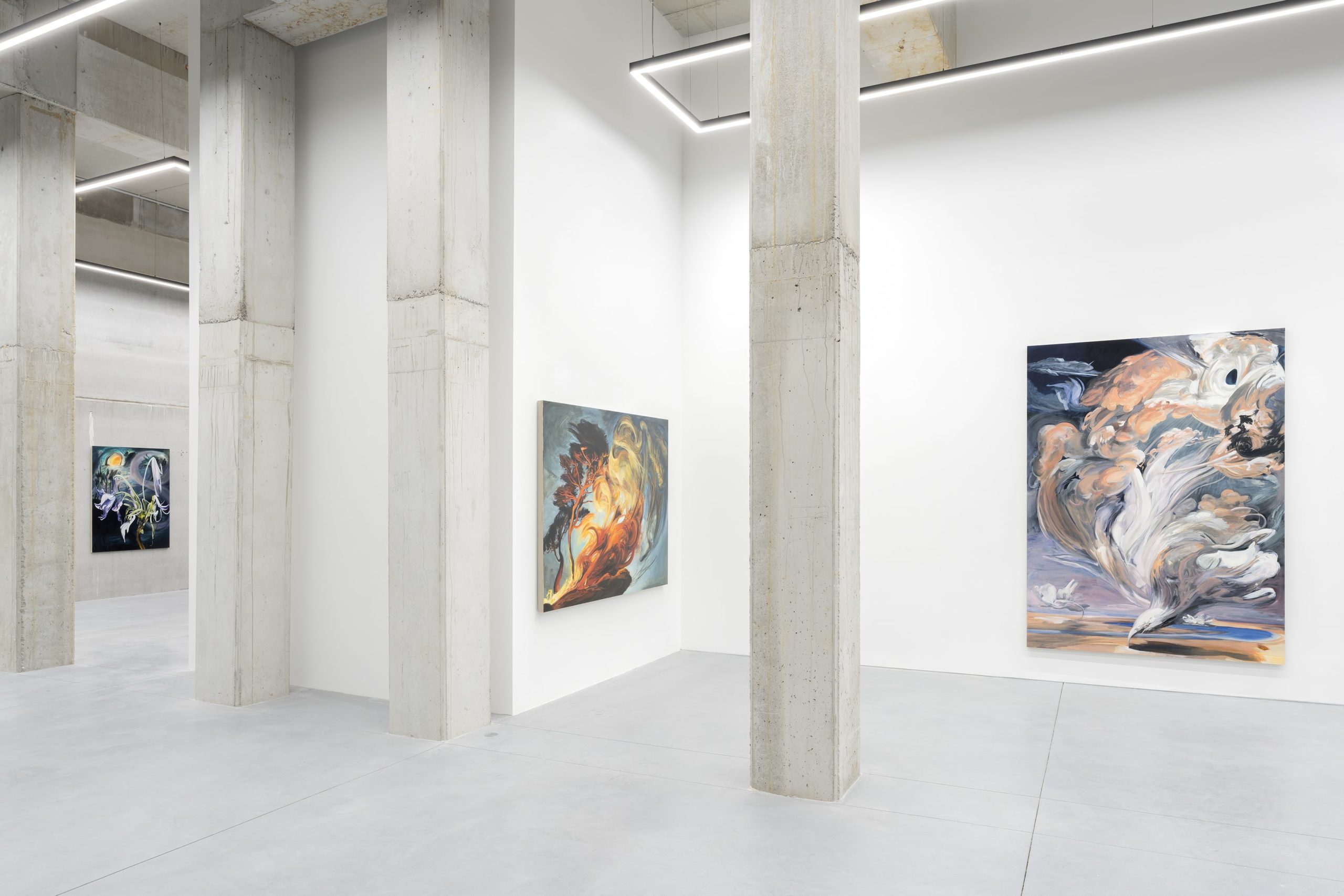 Emma Webster, installation view, “Ready the Lanterns,” at Stems Gallery, Brussels, courtesy of the artist and Stems Gallery.
Emma Webster, installation view, “Ready the Lanterns,” at Stems Gallery, Brussels, courtesy of the artist and Stems Gallery.
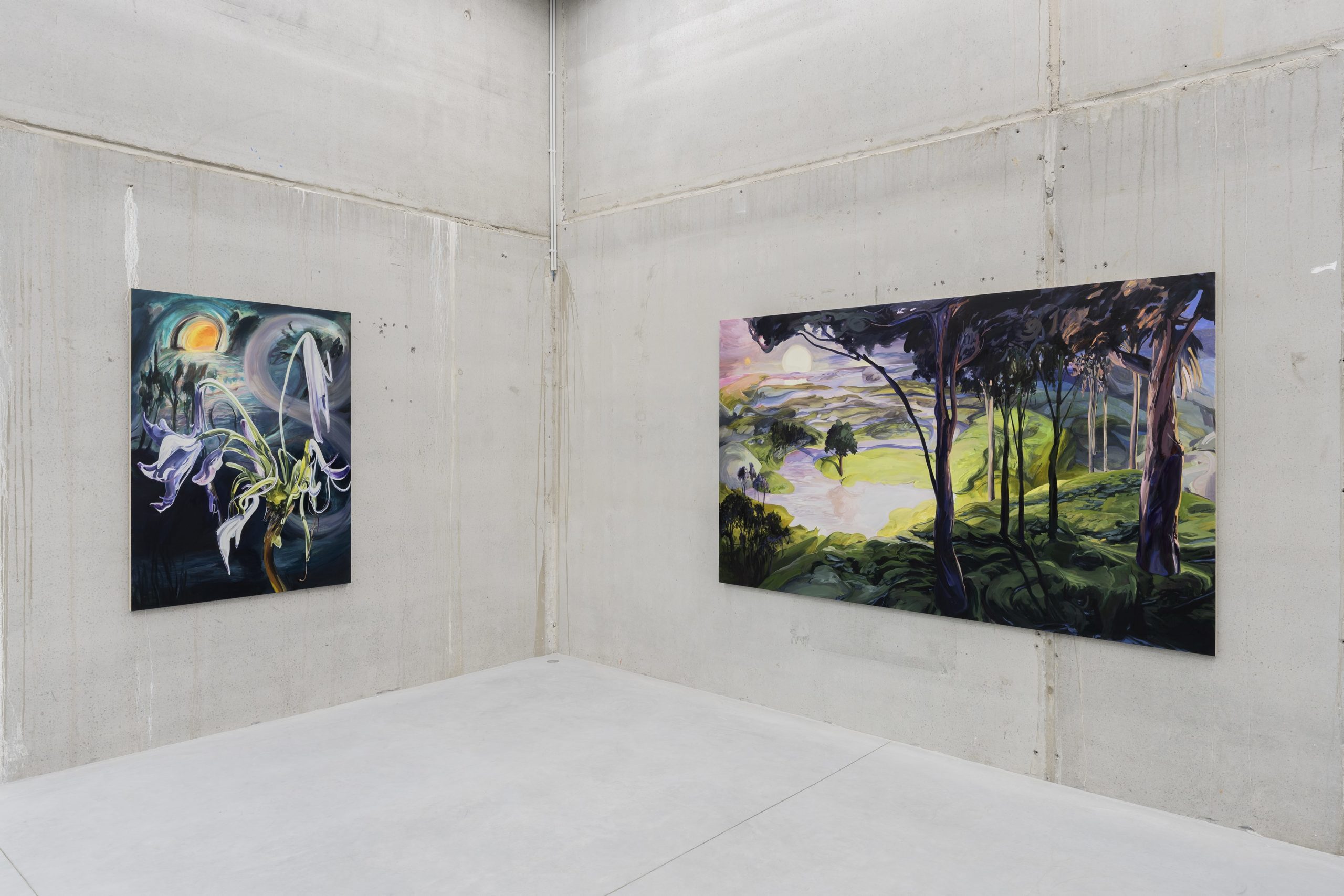 Emma Webster, installation view, “Ready the Lanterns,” at Stems Gallery, Brussels, courtesy of the artist and Stems Gallery.
Emma Webster, installation view, “Ready the Lanterns,” at Stems Gallery, Brussels, courtesy of the artist and Stems Gallery.







